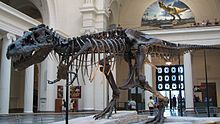Keystone climate impact could be 4 times U.S. State Dept. estimate, study says
Bob Weber, The Canadian Press
Sunday, August 10, 2014 6:05PM EDT
“It didn’t appear that they looked at the market implications,” said co-author Peter Erickson. “If the Keystone pipeline were to enable a greater rate of extraction of the oilsands, would that not increase global fuel supplies, which might then decrease prices and therefore allow a little bit more global consumption?
“That’s the analysis that we did here and we found that it could be the greatest emissions impact of the pipeline.”
Erickson and co-author Michael Lazarus used figures from previous research and international agencies that mathematically describe how oil prices affect consumption. They found that a slightly lower price created by every barrel of increased oilsands production enabled by Keystone XL would increase global oil consumption by slightly more than half a barrel.
The capacity of the pipeline proposed by Calgary-based TransCanada Corp. (TSX:TRP) would be about 820,000 barrels a day. If every barrel of that came from new production, the annual carbon impact of Keystone XL could be up to 110 million tonnes — four times the maximum State Department estimate of up to 27 million tonnes.
Keystone XL’s Climate Impact Could Be Four Times Greater Than State Department Claimed
by Emily Atkin, ThinkProgress
August 11, 2014 at 5:04 pm
Opponents of Keystone XL have often made the argument that the pipeline’s construction would increase production of Canadian tar sands crude oil, an unconventional type of oil that’s embedded in sand and mud. Separating the oil from the mud is complicated – scientists say the process produces three times the greenhouse gas emissions of conventionally produced oil.
But the State Department and those who want to see the pipeline built say that’s not true. “At the end of the day, we are going to be consuming that oil,” former Secretary of the Interior Ken Salazar has said. In other words, Keystone XL’s construction would not impact the climate because Alberta’s carbon-intensive tar sands would inevitably be developed, pipeline or not.
Erickson and Lazarus say the problem with the State Department’s assessment is that it didn’t even consider the possibility that production would increase. “There’s a lot of uncertainty that should be accounted for,” Lazarus said.
“If the pipeline doesn’t help oil sands production expand, if all the oil is gonna get out there otherwise, then there’s no increased [climate] impact. We don’t dispute that,” Erickson added. “But what we’re looking at is, to the extent that the pipeline does help oil sands expand more than it otherwise would, then there’s this climate effect and it looks to be big.”
There have been indications from both the oil industry and the federal government that Keystone XL would increase production of the Canadian tar sands. Indeed, even the top executive of the company contracted to build Keystone XL has admitted that the pipeline is essential for speedy tar sands development.
“Developing tar sands is an opportunity that’s going to be lost for decades to come if new pipelines do not immediately come online,” TransCanada CEO Ross Girling said in January. “If you miss an opportunity, you may lose it for decades and decades to come.”
The International Energy Agency has also stated that tar sands expansion “is contingent on the construction of major new pipelines,” and RBS Dominion Securities of Toronto warned that up to 450,000 barrels a day of tar sands production could be put on hold between 2015 and 2017 if the Keystone pipeline is not approved.
So why wouldn’t the State Department consider global carbon impacts in its assessment? The answer might be that there are still questions as to whether the U.S. government can legally consider worldwide impacts – whether Keystone’s potential impact on global consumption is within the State Department’s scope. It is a United States-based project, after all.
But Lazarus said that shouldn’t matter. “We need to consider, especially from a climate change stance, that emissions know no borders when it comes to greenhouse gases,” he said. “It seems imperative that wherever one is supposed to look at emissions implications of a policy, one must look at it from a global perspective.”





